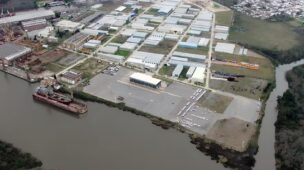Tempo de leitura: 11 minutos
Special Economic Zones (SEZs) have played a pivotal role in global economic development in recent decades. They have transformed regions by attracting investments, creating jobs, and facilitating technology transfer. SEZs, along with similar terms used around the world, have been a crucial policy instrument for economic liberalization and growth. This comprehensive blog post will dive deep into SEZs, their types, global relevance, and related or similar terms used in different countries.
What is a Special Economic Zone (SEZ)?
A Special Economic Zone (SEZ) is a designated geographical area where economic regulations differ from those in the rest of the country. These zones attract foreign direct investment (FDI), promote exports, and enhance industrial development. SEZs often offer tax incentives, relaxed regulatory frameworks, and improved infrastructure to businesses within their boundaries.
Key Features of SEZs
- Tax Incentives: SEZ businesses usually benefit from tax holidays, reduced tariffs, or import/export duties exemptions.
- Regulatory Relaxation: SEZs often have simplified labor laws, land use policies, and environmental regulations to foster a business-friendly environment.
- Enhanced Infrastructure: SEZs typically offer better transportation, communication, and power supply facilities than other parts of the country.
- Trade Facilitation: SEZs may have streamlined customs procedures to facilitate the import and export of goods.
Objectives of SEZs
- Economic Growth: Increasing production and exports boost national and regional economic growth.
- Employment Generation: Creating jobs by attracting businesses and industries.
- Foreign Direct Investment (FDI): Encouraging international companies to invest in the region.
- Technology Transfer: Facilitating the flow of knowledge and technology from foreign to domestic firms.
Types of Special Economic Zones
SEZs are diverse and can take several forms based on their purpose, focus industries, and geographical scope. Below are the common types of SEZs found worldwide:
1. Free Trade Zones (FTZ)
A Free Trade Zone (FTZ) is an area within a country where goods can be imported, stored, and sometimes manufactured without being subject to customs duties or tariffs. FTZs are primarily designed to promote international trade.
- Example: The Jebel Ali Free Zone (JAFZA) in Dubai is one of the largest and most successful FTZs globally, attracting thousands of multinational companies.
2. Export Processing Zones (EPZ)
Export Processing Zones (EPZs) focus specifically on manufacturing goods for export. These zones offer business incentives like tax holidays, import/export duties exemptions, and easy infrastructure access.
- Example: The Shenzhen SEZ in China started as an EPZ, helping transform the city into a global manufacturing hub.
3. Industrial Parks
Industrial Parks are large areas of land set aside for industrial development. They provide infrastructure such as roads, water, and electricity to companies operating in various industries. While not all industrial parks offer the same regulatory benefits as SEZs, many serve as hubs for manufacturing and logistics.
- Example: Silicon Valley in the United States is an industrial park for high-tech industries.
4. Technological and Science Parks
These parks focus on fostering innovation by attracting technology companies, research institutions, and startups. Unlike traditional SEZs, they emphasize knowledge-based industries such as IT, biotech, and renewable energy.
- Example: Tsukuba Science City in Japan has numerous research institutions and high-tech companies.
5. Enterprise Zones
Enterprise Zones are targeted at areas that suffer from high unemployment or economic stagnation. Governments use these zones to encourage businesses to set up operations through tax reliefs and employment incentives.
- Example: The Urban Enterprise Zones (UEZ) program in New Jersey, USA, aims to revitalize depressed areas by offering sales tax reductions and financial assistance.
6. Freeports
A Freeport is a type of SEZ that allows goods to be stored, handled, and sometimes manufactured without being subject to taxes or tariffs until they leave the port. These zones are often located near major seaports or airports.
- Example: Singapore’s Freeport is well-known for facilitating the storage and trade of high-value goods such as art and precious metals.
7. Specialized Economic Zones
Some SEZs are focused on specific industries, such as financial services or agriculture. These zones cater to the unique needs of businesses within those sectors, offering tailored regulations and incentives.
- Example: The Dubai International Financial Centre (DIFC) offers legal and tax incentives for companies operating in the financial sector.
Global Terms Similar to SEZs
Across the world, countries have developed their versions of SEZs under different names. While these terms may differ, the core concept remains: offering incentives to promote economic growth and attract investment.
1. Maquiladoras (Mexico)
The Maquiladora program in Mexico allows foreign companies to import materials and components duty-free for assembly or manufacturing. The final products are then exported, usually to the United States. This program has played a vital role in the U.S.-Mexico trade relationship.
- Notable Fact: The maquiladora industry surged following the implementation of the North American Free Trade Agreement (NAFTA) in 1994, now succeeded by the USMCA.
2. Shenzhen Special Economic Zone (China)
China’s Shenzhen SEZ, established in 1980, was one of the first and most successful examples of SEZs globally. Initially created to attract foreign investment and technology, it has since transformed into a global manufacturing and technology powerhouse.
- Key Outcome: Shenzhen’s development is often cited for China’s rapid economic growth over the past 40 years.
3. Foreign Trade Zones (FTZ) – United States
In the United States, Foreign Trade Zones (FTZs) serve as areas where foreign and domestic merchandise can be stored, processed, or manufactured without the usual import duties. These zones aim to enhance U.S. competitiveness in global trade.
- Example: Port of Houston FTZ is one of the largest in the U.S., facilitating international trade with minimal bureaucratic hurdles.
4. Investment Promotion Zones (IPZ) – Thailand
Thailand offers Investment Promotion Zones (IPZs) to attract investors, particularly in high-tech industries like electronics, automotive, and medical devices. These zones offer a range of tax and regulatory incentives.
- Example: The Eastern Economic Corridor (EEC) is a notable IPZ aimed at turning Thailand into a hub for advanced industries.
5. Economic Development Zones (EDZ) – Vietnam
Vietnam’s Economic Development Zones (EDZs) are industrial parks designed to attract foreign investment by providing a range of tax incentives, streamlined customs procedures, and improved infrastructure.
- Example: The Dinh Vu-Cat Hai Economic Zone is one of the largest and fastest-growing in the country, particularly known for its shipping and logistics industries.
6. Bonded Zones – Taiwan
Taiwan’s Bonded Zones are similar to free trade zones, where goods can be imported, processed, and exported with no or reduced customs duties. These zones are geared toward boosting export-oriented industries.
- Example: The Kaohsiung Export Processing Zone is one of Taiwan’s leading bonded zones, focusing on electronics and technology.
7. Duty-Free Zones – United Arab Emirates
In the United Arab Emirates (UAE), Duty-Free Zones allow businesses to operate without paying customs duties. These zones cater to various industries, including logistics, trade, and manufacturing.
- Example: Jebel Ali Free Zone (JAFZA) in Dubai is one of the most prominent duty-free zones globally, housing over 7,000 companies.
8. Evolution of SEZ Policy in India
India’s SEZ journey started with the establishment of Export Processing Zones (EPZs) in the 1960s. However, these zones did not yield the expected results, primarily due to complex regulatory environments and a lack of proper incentives. Recognizing these shortcomings, the SEZ Act of 2005 was introduced, providing a robust legal framework, attractive fiscal incentives, and a simplified approval process.
In 2024, India’s SEZ policy continues to be dynamic, with key amendments focusing on making SEZs more competitive globally. This shift aligns with India’s vision of becoming a $5 trillion economy and a manufacturing hub under initiatives like Make in India and Atmanirbhar Bharat (Self-Reliant India).
SEZs and Global Economic Impact
The establishment of SEZs has had a profound impact on both the local and global economy. Here are some of the key ways in which SEZs have influenced global trade and development:
1. Job Creation
SEZs have been instrumental in generating millions of jobs worldwide. They attract labor-intensive industries such as manufacturing and textiles, which, in turn, provide employment opportunities for low- and semi-skilled workers.
2. Boosting Exports
Many countries use SEZs to boost exports by offering incentives to businesses that produce goods primarily for international markets. SEZs provide a business-friendly environment that encourages the production of exportable goods.
3. Foreign Direct Investment (FDI)
SEZs are often designed to attract foreign direct investment (FDI) by offering fiscal and non-fiscal incentives, such as tax holidays and streamlined regulatory processes. This influx of capital has helped many developing countries grow their economies.
4. Technology Transfer
By attracting foreign companies, SEZs facilitate the transfer of technology and knowledge to local businesses and workers. This is particularly evident in zones that host high-tech industries, such as electronics and biotechnology.
5. Infrastructure Development
Governments often invest heavily in infrastructure when developing SEZs, leading to improvements in transportation, communication, and utilities. These infrastructure developments benefit both the SEZ and the surrounding regions.
Challenges and Criticisms of SEZs
While SEZs have undoubtedly driven economic growth, they are not without their challenges and criticisms:
1. Social Displacement
In some cases, the establishment of SEZs has led to the displacement of local communities, particularly in rural areas. Governments often acquire land for SEZs, displacing people who may not receive adequate compensation or resettlement assistance.
2. Labor Exploitation
Some SEZs, especially in developing countries, have been criticized for poor labor practices, including low wages, long working hours, and inadequate safety measures. These issues have led to debates about whether SEZs truly benefit the local workforce.
3. Environmental Concerns
SEZs can have significant environmental impacts, particularly in terms of deforestation, air and water pollution, and waste management. As industrial zones, they often attract manufacturing companies that can contribute to environmental degradation.
4. Limited Benefits for Domestic Firms
In some cases, SEZs primarily benefit foreign companies, while domestic firms may struggle to compete. The favorable conditions offered to foreign investors can sometimes put local businesses at a disadvantage.
The Future of Special Economic Zones
As the global economy evolves, so too will the role and structure of SEZs. The future of SEZs is likely to be shaped by technological advancements, environmental concerns, and changes in global trade policies. Here are some trends that could influence the future of SEZs:
1. Green SEZs
Environmental sustainability is becoming an increasingly important consideration for businesses and governments alike. Green SEZs are emerging as a new model, where zones are designed to minimize environmental impact through sustainable infrastructure, renewable energy use, and green manufacturing practices.
2. Smart SEZs
With the rise of digitalization and the Internet of Things (IoT), smart SEZs are being developed to integrate advanced technologies into their operations. These zones will use data analytics, automation, and connectivity to optimize logistics, reduce waste, and improve efficiency.
3. Industry 4.0 Integration
Industry 4.0, characterized by automation, robotics, and artificial intelligence, is set to transform SEZs, particularly those focused on high-tech industries. These zones will serve as testing grounds for innovations in manufacturing, logistics, and data management.
The Takeaway
Special Economic Zones (SEZs) and their various global counterparts have become essential tools for fostering economic growth, attracting foreign investment, and creating jobs. From Free Trade Zones (FTZs) in the United States to Maquiladoras in Mexico, these zones have transformed regions into thriving economic hubs. However, SEZs are not without challenges, including social displacement, labor exploitation, and environmental concerns.
As we move forward, the future of SEZs will likely be shaped by technological advancements and a growing emphasis on sustainability. Green SEZs, smart SEZs, and the integration of Industry 4.0 will set the stage for the next generation of economic zones. Governments and businesses must collaborate to ensure that SEZs continue to drive inclusive and sustainable growth in the global economy.
For those interested in exploring SEZs further or seeking investment opportunities, it is essential to consider both the benefits and challenges these zones present. By staying informed and strategically navigating the regulatory landscape, businesses and investors can harness the full potential of SEZs while contributing to global economic development.
Fonte: Constuction Placements | Foto: Reprodução






Os comentários foram encerrados, mas trackbacks e pingbacks estão abertos.